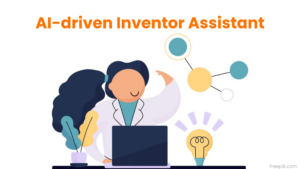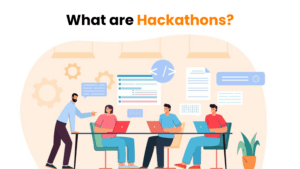What is this Gallup study that everyone keeps quoting to prove high employee engagement leads to 21% greater profitability?
It’s true that High employee engagement = High customer NPS = High financial performance. However, that’s not where the scope and benefits of employee engagement end.
And we see you have been asking all the right questions about employee engagement. You deserve to learn employee engagement in theory and practice.
So, we have compiled a list of all your employee engagement questions and tried our best to answer each one quickly and directly.
No fluff words. You know the obvious. Let’s set it aside and focus on the real meat with data and examples.
We aim to get you started with your employee engagement action plan without wasting time.
Here we go!
What is employee engagement?
Instead of telling you the definition of employee engagement, how about we show what engagement means?
Employee engagement is a powerful tool that secures a company against ever-evolving challenges.
For example, the challenges this year would be work from home, hybrid working, stress & burnout, the resignation cycle, and skill shortages.
But the good news is that it wouldn’t matter whether employees are present physically in your office as long as people within your organization:
- Feel connected to you as a leader,
- Find alignment between their personal and the key company goals,
- Have camaraderie and a sense of belonging in the workplace,
- Take authority of their work because they want to solve the problem for their end consumers,
- Redesign their roles and responsibilities for the job autonomously based on the changing personal and professional needs.
What are the different levels of employee engagement?
You know how the Net Promoter Score (NPS) is a commonly used metric to measure customer loyalty. Let’s use it as an inspiration and manipulate it a bit to create our unique engagement scale. It’ll help us gauge different employee engagement levels.
The scale typically ranges from 0 to 10 and categorizes respondents into three groups based on their ratings.
Detractors (Scores 0-5)
Employees in this category are often apathetic, unmotivated, and disinterested in their work. They may show up to work simply to fulfill their job requirements without any enthusiasm or dedication.
They are unhappy with their work environment, may express negative sentiments, and are more likely to speak unfavorably about the organization. Detractors may exhibit behaviors such as absenteeism, low productivity, and actively seeking alternative employment opportunities.
Passives (Scores 6-8)
Passives are akin to partially engaged or moderately engaged employees. They are generally satisfied with their work but may not be fully committed or enthusiastic. Passives are neither strong advocates nor detractors of the organization. They may perform adequately but are less likely to go above and beyond their job responsibilities.
Promoters (Scores 9-10)
Promoters represent the highly engaged and super-engaged employees in the previous explanation. They are enthusiastic, loyal, and committed to their work and the organization. Promoters actively contribute to a positive work culture, are passionate about their role, and often serve as advocates for the organization both within and outside the workplace. They are more likely to exhibit behaviors such as high productivity, innovation, and willingness to help colleagues.
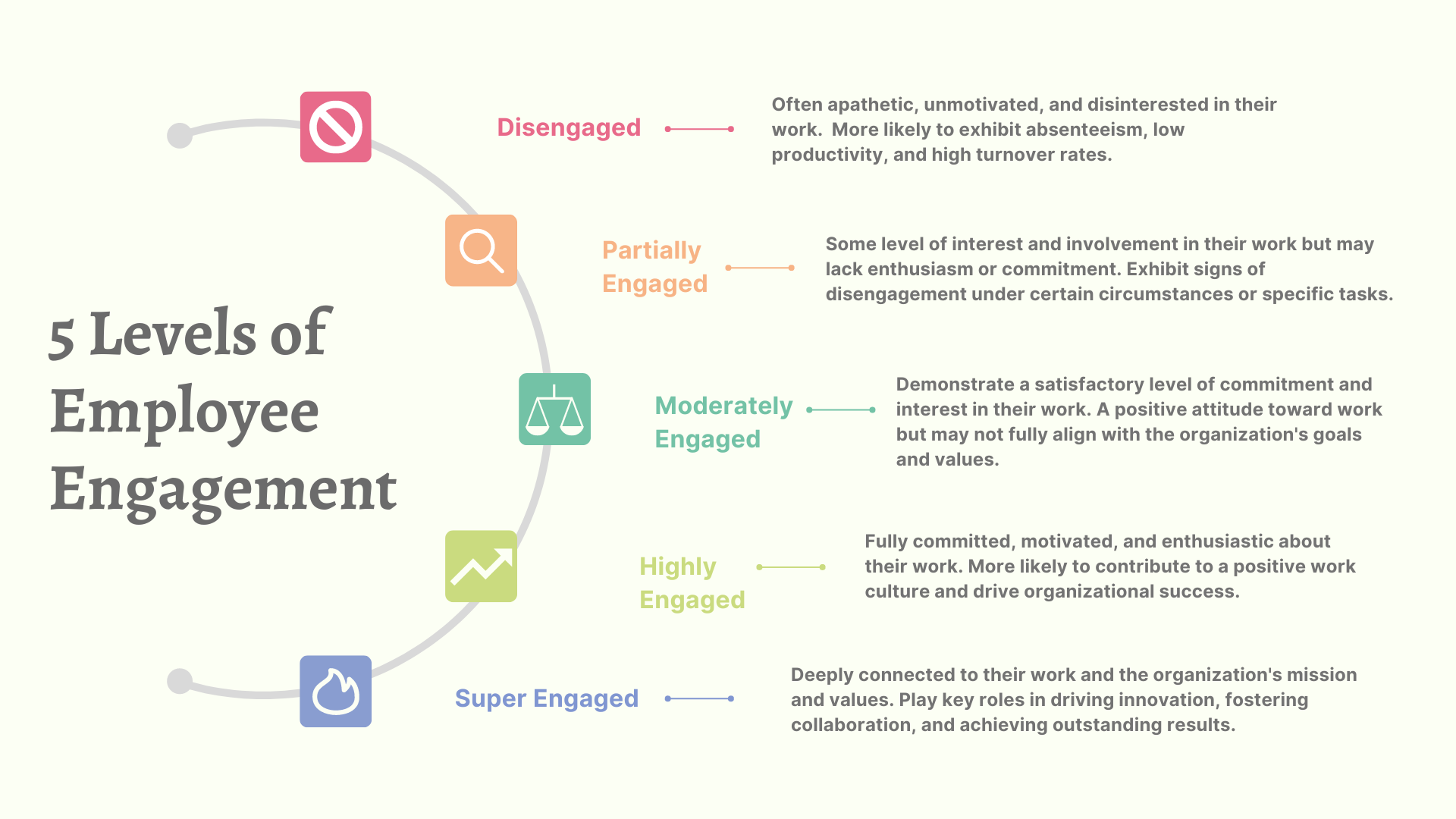
Why is employee engagement important?
Now is the right time to scrunch out tangible data to help you understand why employee engagement is important.

Multiple studies and research show that the following are the key priorities of leaders and executives for their businesses. (Not in any particular order.)
- Change Management
- Idea Management
- Innovation Management
- Healthy Patent Portfolio
- Talent Retention
- Company Culture
- Innovation Culture
- Innovation Program
- Risk Management
- Continuous Improvement
- New Products and Services
- Customer Satisfaction
- Market Expansion
- Employee Wellbeing
- Employee Satisfaction
- Collaboration
- Revenue Growth
- Sales Growth
The solution to all these priority areas is – Employee Engagement.
Employees are the soul of any organization, and you cannot achieve excellence without their engagement.
Extensive research by McKinsey shows that disengaged employees could cost a median-size S&P company up to $355 million a year.
So, the next time someone asks you where you see your company in the next 5 years, be ready to say – a billion dollars lighter with lost productivity.
Of course, unless you’ve understood the importance of employee engagement and we can reel in our dramatic flare.
P.S. Engaged employees are 87% less likely to leave your company. Think about it!
What are the different types of employee engagement?
An employee’s relationship with their work, colleagues, and organization is multifaceted. And that’s where the confusion arises.
Leaders often misinterpret an individual’s work engagement to be the only engagement parameter.
How can someone who is giving their 100% to a task not be fully engaged?
Let’s see how with an example!
At Bright Solutions, a software development company, the management team noticed a decline in employee engagement, reflected in decreased productivity and higher turnover rates.
Even though the company was renowned for its innovative campaigns and cohesive team spirit, led by its visionary CEO, Emily, there was something amiss.
Despite their continued success, she sensed a dip in morale and productivity. Concerned, she decided to investigate further.
Emotional Engagement
Emily sat down with Sarah, one of the senior designers, to understand her perspective. Sarah confessed feeling disconnected from her work. Despite her creative talents, she lacked a sense of purpose and fulfillment. Emily realized that emotional engagement was key; employees needed to feel their work mattered. She initiated regular team meetings where everyone could share their victories and challenges, fostering a sense of belonging and significance.

Cognitive Engagement
To address the need for mental stimulation, Emily introduced “Pick Your Innovation Days,” where team members could dedicate time to explore new ideas and concepts on the day(s) of their choice.
This encouraged cognitive engagement, sparking creativity and intellectual curiosity. Sarah, previously feeling uninspired, eagerly embraced the opportunity to brainstorm and collaborate with her colleagues, igniting a newfound passion for her work.

Behavioral Engagement
Emily noticed that while the team was skilled, they lacked initiative in taking ownership of projects. She encouraged behavioral engagement by empowering team members to lead initiatives and make decisions autonomously. People given the opportunity to spearhead a campaign, demonstrated proactive behavior, driving the project forward and inspiring peers to do the same.

Social Engagement
Recognizing the importance of social connections, Emily organized team-building activities and social events. These gatherings allowed team members to bond outside of work, strengthening social engagement. Sarah, who previously felt isolated, found camaraderie among her colleagues, building a support network that boosted morale and collaboration.

Intellectual Engagement
Emily reiterated the agency’s mission to create impactful campaigns that resonated with their clients and audiences. By reinforcing the agency’s purpose, she fostered intellectual engagement among team members.
Note: Traditionally, every other organization forms employee engagement strategies to cultivate intellectual engagement.

Physical Engagement
Finally, Emily ensured a conducive work environment that promoted physical engagement. She introduced flexible work arrangements and wellness initiatives to support employees’ physical well-being. Team members don’t feel burnt out, embracing a healthier work-life balance, leading to increased energy and enthusiasm in her role. Yoga sessions and partnerships with gyms are the two examples Emily adopted to promote well-being.

What are the 3 P’s of engagement?
The “3 P’s of engagement” is a framework often used to understand and enhance employee engagement.
Purpose
If an employee understands their purpose with the organization, they’ll be able to resonate with the following drivers of engagement:
- My role allows me to be creative and work with others to bring our projects to life.
- I believe I’m making a difference and contributing to our team’s success.
- The company’s focus on sustainability and social responsibility aligns perfectly with my personal values.
- My job enables me to utilize my strengths.
- I have the chance to follow my passion and take control of innovation projects.
- I see myself taking on more leadership responsibilities.
- I trust our senior leaders.
- I helped launch a new initiative that really resonated with our customers, and seeing their positive feedback made me proud of the work.
Ask questions centered around the individual’s experience and perspective to gauge their alignment with the purpose.
Passion
Passion relates to employees’ enthusiasm, energy, and emotional connection to their work. When employees are passionate about what they do, they are more likely to be fully engaged and committed to achieving excellence. Organizations can cultivate passion by providing opportunities for employees to work on projects they are passionate about, recognizing and celebrating their achievements, and fostering a culture that encourages creativity and innovation.
Related Read: Benefits of Intrapreneurship
Pride
Pride involves employees’ sense of pride and fulfillment in their work, team, and organization. When employees feel proud of their accomplishments and the company they work for, they are more likely to be motivated, satisfied, and loyal.
Organizations can nurture pride by recognizing and rewarding employees for their contributions, promoting a positive work culture that values diversity and inclusion, and providing opportunities for professional growth and development.
What are the 3 key drivers of employee engagement?
Job Characteristics: Meaningful Work
Employees are more engaged when they find their work meaningful and purposeful. When they understand how their contributions contribute to the organization’s goals and feel that their work aligns with their values, they are more likely to be engaged. Meaningful work gives employees a sense of fulfillment and satisfaction, motivating them to perform at their best.
Example: Think about a graphic designer working for a nonprofit organization that focuses on environmental conservation. They might feel deeply passionate about the cause and motivated by the opportunity to use their creative skills to raise awareness about sustainability issues.
Statistic: According to a Gallup study, employees who strongly agree that they can link their goals to the organization’s goals are 3.5 times more likely to be engaged at work.
Interpersonal Relations: Positive Camaraderie
Relationships with colleagues, managers, and the broader organizational community significantly impact employee engagement. Positive relationships built on trust, respect, and effective communication create a supportive work environment where employees feel valued and connected. Strong interpersonal connections foster collaboration, teamwork, and a sense of belonging, which are essential for engagement.
Example: Imagine a software engineer in a close-knit team that collaborates effectively and supports each other. With regular team-building activities and social events, it will strengthen their bonds and create a positive work culture.
Statistic: Research by the Corporate Leadership Council found that employees with high levels of social support at work are 20% more likely to stay with their organization.
Organizational Support: Opportunities for Growth and Development
Employees are more engaged when they have opportunities to learn, grow, and develop professionally. Organizations that prioritize employee development through training programs, mentorship, and career advancement opportunities demonstrate a commitment to their employees’ success. Providing opportunities for skill enhancement and career progression not only keeps employees motivated and engaged but also helps retain top talent.
Example: A marketing coordinator is enrolled in a leadership development program offered by their company. They appreciate the investment in their professional growth and feel motivated to excel in their current role and advance in career.
Statistic: A study by LinkedIn revealed that 94% of employees would stay at a company longer if it invested in their career development.
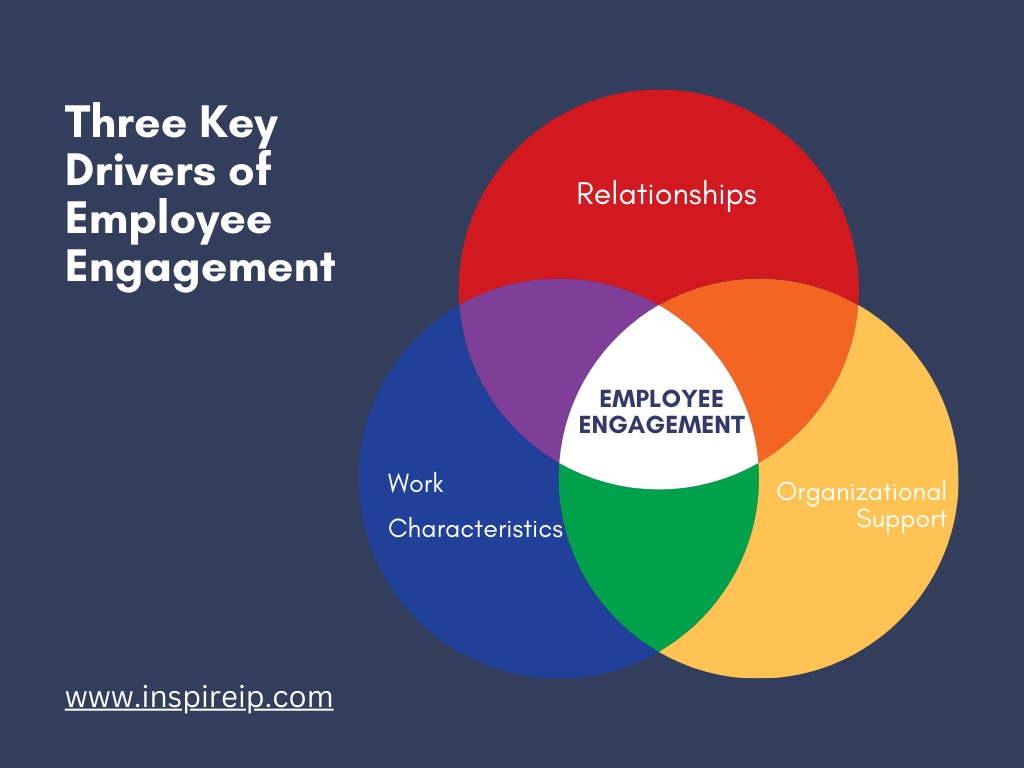
These key drivers are important because they address fundamental human needs and motivations in the workplace. Employees seek meaning and purpose in their work, crave positive relationships and connections with others, and desire opportunities to learn and advance in their careers. By focusing on these drivers, organizations can create a work environment that fosters employee engagement, satisfaction, and ultimately organizational success.
How to do employee engagement?
#1 One-one-one meetings
Open communication is necessary to build trust and strengthen relationships between employees and their managers.
According to a study by Officevibe, 68% of employees who have regular one-on-one meetings with their managers feel more engaged in their work.
An informal but structured meeting has the power to address multi-level issues, such as:
Resentment within team members that hinders collaboration and the free flow of ideas
For example, the fear of people stealing ideas that’s stopping someone from giving their best. You could listen and redress related concerns swiftly through 1:1 meetings.
Feeling left out or inadequate in the team
This is especially true with hybrid teams. Individuals working from home tend to feel disconnected from team members, goals, and values. One-on-one meetings provide dedicated time for managers to focus on each employee’s needs, concerns, and goals. This personalized attention makes employees feel valued and appreciated, enhancing their sense of engagement and commitment to their work.
Constructive feedback and recognition of contributions
These meetings offer an opportunity for managers to provide feedback on employees’ performance, recognize their achievements, and address any areas for improvement. Constructive feedback and recognition of contributions reinforce a sense of purpose and motivation, driving higher levels of engagement.
Discuss career development path and opportunities
One-on-one meetings serve as a platform for discussing employees’ career aspirations, growth opportunities, and development plans. Managers can offer guidance, support, and resources to help employees achieve their professional goals, leading to increased job satisfaction and loyalty.
Safe space to discuss issues openly
Employees may encounter challenges or obstacles in their work that require assistance or guidance from their managers. One-on-one meetings provide a safe space for employees to discuss issues openly and collaboratively brainstorm solutions with their managers, fostering a sense of trust and support.
Building trust and rapport
By demonstrating genuine interest in employees’ well-being, listening actively to their concerns, and following through on commitments, managers create a supportive and empowering environment that enhances employee engagement.
#2 Brainstorming sessions
As much as you’d like to hold regular brainstorming sessions, involving the entire team or including yourself and the concerned employee, you cannot.
Thanks to modern solutions, you can introduce brainstorming features to your existing technology stack and social tools, such as Teams.
Benefits?
- Constant Assistance at any time, anywhere
- Dynamic Conversations with Creative Brainstorming Questions
- Creative Prompting
- Creative Thinking Exercises
- Encouraging Playful Exploration
- Morale Boost
Enjoy focused and targeted prompts to kick-off brainstorming sessions and adventures for innovators.
Here you go: Brainstorming Questions to Find Your IP (30+ Actionable Prompts for Innovators)
#3 Employee engagement software
Let’s understand the role of a professional employee engagement platform with a real business use case.
At GreyB, an innovation consulting firm, employees were feeling disconnected and disengaged due to the transition to in-office after work during the pandemic. And, then there was a change in their office location, leading to high discomfort and another drastic change.
Individuals from different departments, such as Research, Infringement, Business Development, and Software Development, voiced their concerns of:
- Feeling disconnected from the company goal
- Lack of motivation to innovate or take up projects outside of their regular tasks
- New office space does not resonate with them, and being a safe space
- Not being able to communicate openly with various stakeholders
Recognizing the importance of maintaining employee engagement, the HR team implemented an employee engagement software solution. Through the platform, employees gained access to virtual innovating features, innovation challenges, wellness challenges, and a centralized communication hub.
The GreyB team began their employee engagement journey by running their first innovation challenge, which was to bring out the best in their new workspace. The platform enabled them to:
- Implement the new idea generation framework,
- Champion running innovation challenges,
- Implement ideas quickly without compromising the quality,
- Promote diversity in the workplace,
- Give everyone an unbiased platform to share their ideas,
- Hear and address everyone’s perspective towards new solutions,
- Make collaboration and communication a part of their organization,
- Loop in every stakeholder, i.e., juniors, seniors, new employees, middle management, and top management.
Read the complete case study here: How InspireIP helped GreyB create a successful innovation program.
#4 Employee engagement tools
The benefits of employee engagement tools in an organization are far beyond increasing the speed of business, saving time and resources, and reducing human error. Modern AI-powered tools are now used in many proactive ways, such as:
- promoting workplace engagement and productivity
- automating repetitive tasks and processes
- making data-driven smart decisions
- analyzing and bridging learning gaps
- creating personalized experiences for employees
The right AI tools facilitate day-to-day tasks like optimizing recruitment, onboarding new employees, and strengthening employee engagement.
Our top pick based on research and personal accomplishments:
- Idea Assist: Idea and Innovation Management
- Effy AI: Performance Management
- Zavvy: Talent Management
- Trello: Task and Project Management
- HypeDocs: Celebrate Employee Wins
- IP Assist: Invention Disclosure and IP Management
- Typeform: Survey and Feedback
#5 Training and development programs
Learning from the best and biggest.
At Google, the company’s commitment to employee engagement and development is evident through its renowned “Googlegeist” program. Googlegeist is an annual survey conducted by Google to gather feedback from employees on various aspects of their work experience, including training and development opportunities.
For instance, if a software engineer at Google, expresses interest in deepening their expertise in machine learning. Leaders at Google recognize their potential and passion for the field and enroll the employee in Google’s Machine Learning Bootcamp—an intensive training program designed to equip employees with advanced skills in machine learning and artificial intelligence.
Throughout the Bootcamp, the employee not only gains valuable technical knowledge and skills but also has the opportunity to collaborate with experts in the field and work on real-world projects.
They feel empowered and motivated by the investment Google made in their professional development, leading to increased engagement and commitment to their work.
Here’s a Training and Development Survey Template to help you create the best learning opportunities for your employees.
#6 Intrapreneurship Initiatives
Highly talented people are often driven by their desire to innovate, work on amazing projects, and practice autonomy over their work.
Intrapreneurship refers to harnessing the entrepreneurial spirits of employees and encouraging them to pursue opportunities within the organization.
Intrapreneurship initiatives typically involve creating an environment that supports and empowers employees to pursue innovative ideas and initiatives. This may include providing resources such as time, funding, and mentorship, as well as establishing processes, ideation platforms, and structures to evaluate, develop, and implement intrapreneurial projects.
Learn the benefits of intrapreneurship and the large MNCs leveraging it to grow here: What are the benefits of an intrapreneurship culture? (With Intrapreneurship Examples)
#7 Cross-functional collaboration
Cross-functional collaboration is pivotal for employee engagement goals as it cultivates a culture of shared purpose, where diverse talents converge to tackle challenges, fostering innovation, camaraderie, and a profound sense of collective achievement.
When you think about the big picture, everything is interconnected. When you do any of the aforementioned tasks, such as facilitating brainstorming sessions, innovation programs, intrapreneurial projects, and training, you bring people closer together.
One isn’t possible without the other. You just have to recognize the potential of cross-functional collaboration and introduce a medium to support it.
The following mediums can serve as effective platforms for promoting cross-functional collaboration:
Project Management Tools
Platforms like Asana, Trello, or Jira facilitate collaboration by allowing teams from different departments to coordinate tasks, share updates, and track progress on projects in real time.
Communication Apps
Tools such as Slack, Microsoft Teams, or Google Workspace provide channels for instant messaging, file sharing, and video conferencing, enabling seamless communication and collaboration across teams.
Idea and Innovation Management Software
Platforms such as Idea Assist and IP Assist provide a medium to run team-building projects, challenges, regular open communication, or brainstorming sessions that bring together representatives from various departments to discuss ideas, share insights, and solve problems collaboratively.
[Learn the ropes of ideation to implementation: A Roadmap to Innovation: Free Ebook Download]
Cross-Functional Projects
Initiating projects or task forces that require collaboration between departments encourages team members to work together, share expertise, and achieve common goals.
Training and Workshops
Providing training sessions or workshops on collaboration techniques, conflict resolution, and effective communication enhances employees’ collaboration skills and promotes cross-functional teamwork.
#8 Job crafting
Job crafting enables an employee to take charge of their job’s role and responsibilities with little to no involvement of management. For instance, a content strategist may reframe their work as bringing in leads for sales instead of simply forming content development strategies.
Or an innovation manager might reframe their work by getting people to touch base with their intrapreneurial spirit.
It gives employees autonomy over their work and makes them responsible for their success and failure.
Eventually, it engages them to do their best in everything they do.
What is my role in employee engagement?
#1 Leadership
The C-suite must regularly communicate the company’s vision and values, emphasizing the importance of employee well-being and engagement. They must lead by example, actively participating in employee engagement initiatives and fostering an open-door policy for feedback.
It’s the leadership that sets the tone for employee engagement by establishing a clear vision, values, and organizational culture.
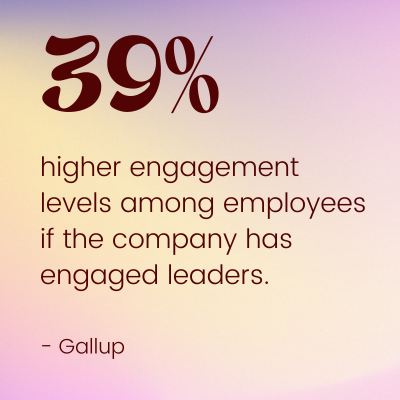
#2 Investors and Shareholders
Nearly nine in ten investors say employee engagement is the key indicator for companies they fund, according to a new global study by Mercer.
Investors and shareholders have a vested interest in employee engagement as it directly impacts organizational performance and profitability. Engaged employees are more productive, innovative, and committed to achieving company goals, which can lead to higher returns on investment and shareholder value.
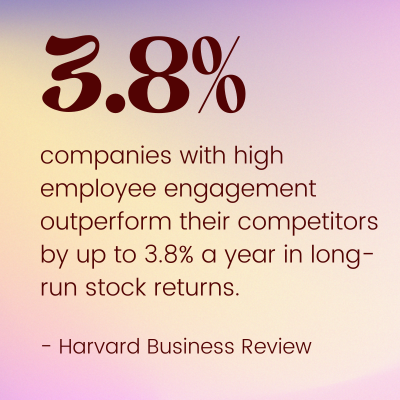
#3 Managers
Managers play a direct role in employee engagement by serving as mentors, coaches, and advocates for their team members. They provide regular feedback and recognition, align individual goals with organizational objectives, and create a supportive work environment where employees feel valued, motivated, and empowered to succeed.
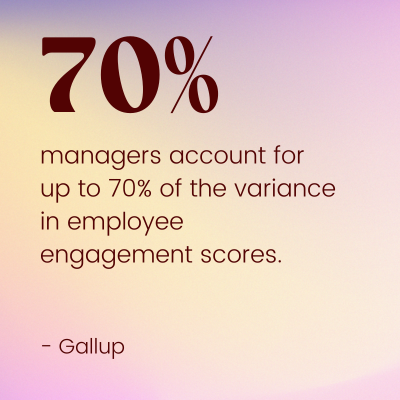
#4 HR Department
HR professionals play a key role in designing and implementing employee engagement initiatives. They are responsible for gathering feedback through surveys and assessments, analyzing data to identify trends and areas for improvement, and developing strategies to enhance employee satisfaction, retention, and performance.
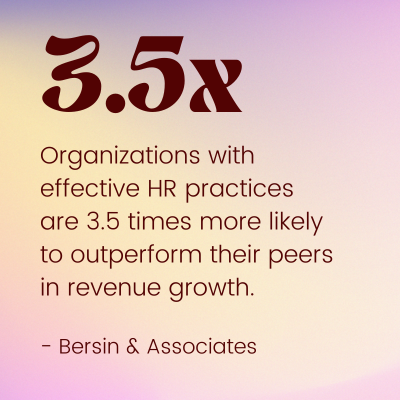
#5 Employees
Employees are active participants in their own engagement journey. They contribute to a positive work culture by actively participating in team activities, offering constructive feedback, and taking ownership of their professional development. Engaged employees are motivated, committed, and passionate about their work, driving productivity and innovation within the organization.
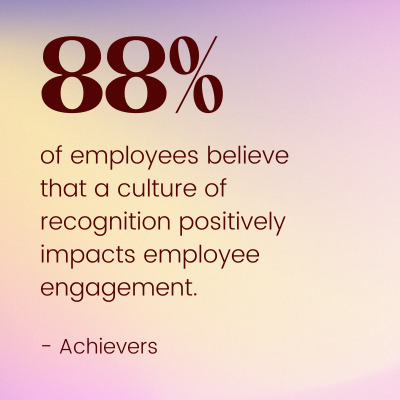
#6 Customers and Clients
Customers provide feedback on their interactions with employees, highlighting instances of exceptional service or areas for improvement. Positive feedback from satisfied customers reinforces employees’ sense of purpose and pride in their work.
Engaged employees are more likely to deliver exceptional customer service, leading to increased customer loyalty and satisfaction.
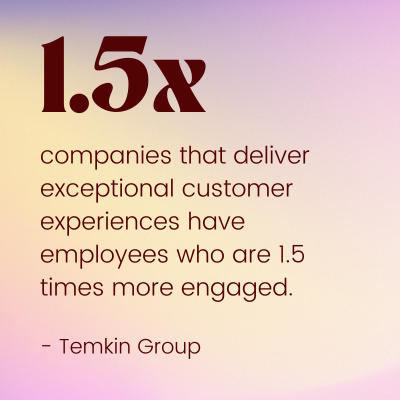
What are employee engagement examples?
#1 Employee Recognition Programs
Implementing a formal employee recognition program that acknowledges, and celebrates employees’ contributions and achievements. For example, an “Employee of the Month” award with a certificate, gift card, or other rewards can motivate employees and boost morale.
- Importance: Recognition programs acknowledge and celebrate employees’ contributions, reinforcing positive behaviors and fostering a culture of appreciation and gratitude.
- Example: At Adobe, they have the “Adobe Bravo Awards,” where employees nominate colleagues who exemplify the company’s values. Winners receive monetary rewards, recognition from senior leadership, and opportunities for career advancement.
- Statistic: According to a survey by Globoforce, 78% of employees said being recognized motivates them to do a better job.
#2 Wellness Initiative
Offering wellness programs and activities to support employees’ physical and mental well-being. This could include on-site fitness classes, mindfulness workshops, or access to counseling services. For instance, organizing a weekly yoga session or providing healthy drinks and snacks in the office can promote a healthier work environment.
- Importance: Wellness initiatives prioritize employees’ physical, mental, and emotional well-being, promoting work-life balance, reducing stress, and enhancing overall health and productivity.
- Example: At Twitter, they offer “Take Care” days, where employees can take additional paid time off to focus on self-care activities, such as mental health days, volunteer work, or personal development.
- Statistic: According to the World Health Organization, for every $1 invested in employee wellness programs, companies can expect a return of $3-$6 in reduced healthcare costs and improved productivity.
#3 Innovation Strategies
Innovation strategy cultivates employee engagement by inviting individuals to share ideas, tackle challenges, and shape the future of the organization.
By providing opportunities for employees to innovate, contribute to meaningful projects, and see their ideas come to fruition, organizations inspire a sense of ownership, purpose, and fulfillment.
Moreover, involving employees in innovation initiatives fosters collaboration, creativity, and continuous learning, strengthening their connection to the company’s mission and vision.
As employees feel valued and empowered to make a difference, their engagement levels soar, leading to increased productivity, loyalty, and overall satisfaction in their roles.
Related read: How to build an innovation strategy?
#4 Employee Resource Groups (ERGs)
Employee Resource Groups (ERGs) are employee-led communities that provide support, networking, and advocacy for underrepresented groups within organizations.
- Importance: ERGs provide a sense of belonging, support, and empowerment for employees from underrepresented groups, promoting diversity, inclusion, and cultural awareness within the organization.
- Example: At LinkedIn, they have the “Women in Tech” ERG, which organizes networking events, mentoring programs, and skill-building workshops to support female employees in the tech industry.
- Statistic: A study by McKinsey found that companies with diverse leadership teams are 35% more likely to have financial returns above their industry median.
#5 Employee Feedback and Listening Channels
Creating open communication channels for employees to share feedback, ideas, and concerns. This could include regular town hall meetings, a central communication hub, or anonymous surveys.
- Importance: Employee feedback and listening channels demonstrate that their opinions are valued, fostering trust, transparency, and open communication within the organization.
- Example: Microsoft uses an internal platform called “MyMicrosoft” where employees can share feedback, ideas, and concerns directly with leadership. Regular pulse surveys and town hall meetings provide additional opportunities for employees to voice their opinions.
- Statistic: A study by Deloitte found that organizations with a strong feedback culture are 15 times more likely to have engaged employees.
#6 Asking Employees Straightaway
What better way to set the best employee engagement example than by hearing it from the horse’s mouth?
How?
For starters, you can say: Hi, what don’t we talk about around here that we really should be talking about?
Instead of looking outside for ways to engage your employees, trust them to tell you. But that needs building a culture of empathy and support.
Now, we are not talking about surveys and feedback forms to gauge employee needs, satisfaction, and views.
We are talking about open communication.
#7 Focus on Inclusion, Not Just Diversity
The importance of inclusion is limitless.
You must actively, persistently, and systemically foster diversity and equity, identifying and removing systemic and other barriers.
For example, did you know your best employee could be getting shunned just because of their ethnicity? Just because they are Black?
Picture, for example, a transgender employee discriminated against over bathroom access.
Yes, it gets that granular.
Employees who differ from their colleagues end up hiding their true selves causing them to feel stressed, overwhelmed, and excluded.
You must ensure this isn’t the case in your organization.
How to drive employee engagement?
Drivers of engagement are many. We just discussed the three key drivers of employee engagement. Here’s a printable view of the top drivers of employee engagement at a granular level.
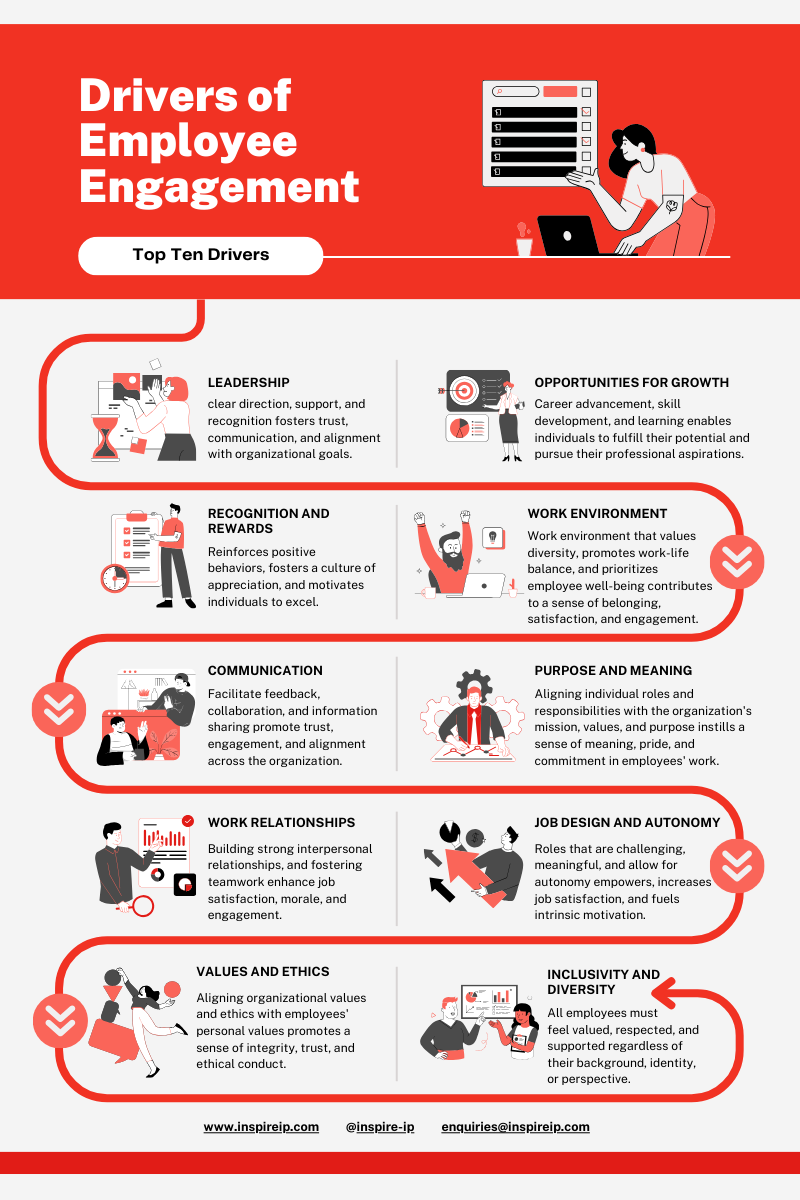
Why employee engagement fails?
It’s a well-known fact that happy and satisfied employees might not always be engaged, but engaged employees are always happy and satisfied.
However, companies often misinterpret the interconnectedness between employee engagement, satisfaction, and happiness.
Fun Fridays, weekend trips, and activities become the way to engage employees. And when these measures don’t lead to a productive work employee, they get disappointed.
So, what’s the cure?
Employee engagement can fail due to a myriad of interconnected factors that hinder an organization’s ability to foster a motivated, committed, and high-performing workforce. Here’s an elaborate exploration of why employee engagement fails:
Lack of Leadership Commitment
Employee engagement initiatives require visible and committed leadership support to succeed. When leaders fail to prioritize engagement, allocate resources, or actively participate in engagement efforts, employees may perceive engagement as a low priority or insincere, leading to apathy and disengagement.
Mismatched Organizational Culture
A culture that does not align with employees’ values, beliefs, and expectations can undermine engagement efforts. When organizational values are not practiced or upheld, and there is a disconnect between stated values and actual behaviors, employees may feel disillusioned and disengaged, leading to decreased morale and loyalty.
Poor Work-Life Balance and Well-being
Organizations that prioritize productivity over employee well-being risk burnout, stress, and disengagement. When employees are overworked, lack autonomy, or experience work-life imbalance, they may become disengaged, leading to decreased productivity, creativity, and job satisfaction.
Resistance to Change
Organizational changes, such as restructuring, layoffs, or mergers, can create uncertainty, fear, and stress among employees. When changes are poorly managed, communicated, or implemented, employees may resist or disengage from the change process, leading to decreased morale, productivity, and engagement.
Ineffective Performance Management
Flawed performance management processes, including biased evaluations, unclear goals, or limited feedback, can undermine employee motivation, morale, and engagement. When employees feel unfairly evaluated, unrecognized, or unsupported in their development, they may become disengaged and demotivated, leading to decreased performance and retention.
Cultural Barriers and Bias
Cultural barriers, such as discrimination, harassment, or exclusionary practices, can create toxic work environments that erode trust, collaboration, and engagement among employees. When employees experience bias, discrimination, or microaggressions, they may feel marginalized, undervalued, and disengaged, leading to decreased morale and productivity.
Lack of Employee Voice and Empowerment
Employees want to feel heard, valued, and empowered to contribute their ideas, opinions, and feedback. When organizations fail to provide avenues for employee voice, involvement, and decision-making, individuals may feel disempowered, disenfranchised, and disengaged, leading to decreased motivation and commitment.
Keep getting answers to the most sought after questions in our free eBook filled with interactive worksheets and templates.
What can you expect? Extensive report on:
- What are employee engagement activities?
- What are employee engagement strategies?
- What are employee engagement initiatives?
- What are employee engagement programs?
- What are employee engagement practices?
- Best employee engagement practices
- What are the 5 C’s of employee engagement?
- What are the 4 E’s of employee engagement?
- Does employee engagement improve business performance?
- Does employee engagement improve retention?
- How can employee engagement be measured?
- How employee engagement is measured?
- How can employee engagement impact business performance?
- How can employee engagement be improved?
- How can employee engagement increase motivation levels?
- How employee engagement drives growth?
- Why employee engagement is key to company success?
- Why employee engagement is low?
Download your free eBook here!

